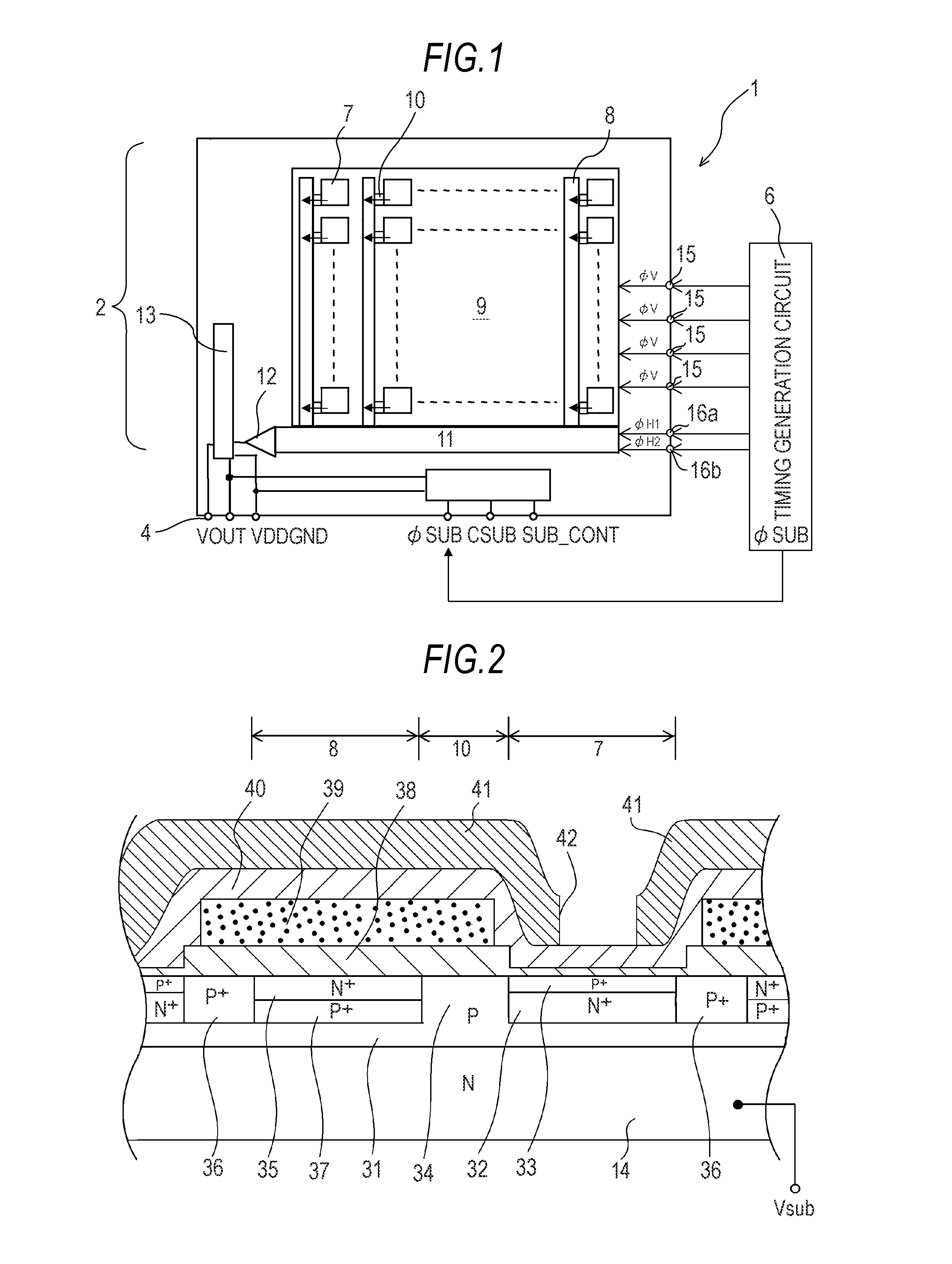Solid-state imaging device, driving method thereof, and imaging apparatus
a technology of solid-state imaging and driving method, which is applied in the direction of exposure control, instruments, television systems, etc., can solve the problem of difficulty in obtaining a wide dynamic range appropriately
- Summary
- Abstract
- Description
- Claims
- Application Information
AI Technical Summary
Benefits of technology
Problems solved by technology
Method used
Image
Examples
second embodiment
2. Second Embodiment
[0102]In the first embodiment described above, the case of obtaining two image signals with different exposure periods has been described as an example. However, the number of image signals being combined is not necessarily two, and three or more image signals with different exposure periods may be combined together. In the case of obtaining three or more image signals with different exposure periods, the configuration of the solid-state imaging device is the same as that used in the first embodiment described above.
Operation of Solid-State Imaging Device
[0103]Hereinafter, the operation of the solid-state imaging device of the case of obtaining three image signals with different exposure periods will be described. That is, another example of a driving method of the solid-state imaging device according to the embodiment of the present invention will be described.
Acquisition of Voltage Signal with Different Exposure Periods
[0104]In the case of obtaining three image...
third embodiment
3. Third Embodiment
Configuration of Wide D Camera
[0141]FIG. 8 is a block diagram illustrating a general configuration of a wide dynamic range camera (hereinafter referred to as a “wide D camera”) which is an example of an imaging apparatus according to an embodiment of the present invention.
[0142]The wide D camera illustrated in FIG. 8 includes an optical component 130, an image sensor 131, a pre-processing portion 132, a signal processing portion 133, an output portion 134, a TG 135, an EVR 136, a microcomputer 137, an optical component control circuit 138, and a recording medium 139.
[0143]The optical component 130 is a lens or an optical filter that removes unnecessary wavelength components, and may be an ND (neutral density) filter, for example, which is a light-intensity adjustment filter. Light which has been incident from a subject and has passed through the optical component 130 is captured by the image sensor 131 and is then converted to electrical signals. Moreover, the opt...
PUM
 Login to View More
Login to View More Abstract
Description
Claims
Application Information
 Login to View More
Login to View More - R&D
- Intellectual Property
- Life Sciences
- Materials
- Tech Scout
- Unparalleled Data Quality
- Higher Quality Content
- 60% Fewer Hallucinations
Browse by: Latest US Patents, China's latest patents, Technical Efficacy Thesaurus, Application Domain, Technology Topic, Popular Technical Reports.
© 2025 PatSnap. All rights reserved.Legal|Privacy policy|Modern Slavery Act Transparency Statement|Sitemap|About US| Contact US: help@patsnap.com



